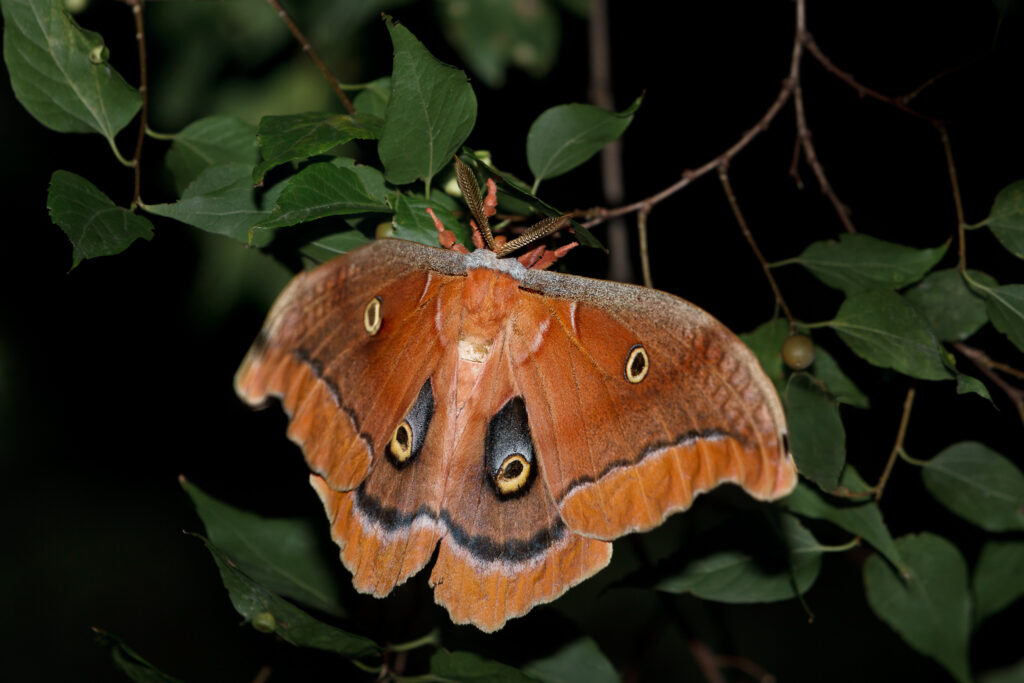Twilight is over. The last warm hues of sunset have given way to the inky blue and violet of nighttime. We may be abed, our eyes closed, and on our way to dreamland. But nature has a night shift.
These nocturnal wildlife get busy living while we are fast asleep.
Crickets
Crickets’ nighttime activities revolve around reproduction. Their chirping is vital to finding a suitable mate. A cricket’s chirp originates from its wings. Instead of legs sawing together like grasshoppers, a cricket will scrape a specialized part of one wing across wrinkles under the other wing. This process, called “stridulation,” is much like rubbing your thumb over the teeth of a comb.
This vibrato has different volumes. One reason is that all cricket species have unique chirps. A common field cricket can chirp at 100 decibels, close to a referee whistle. Others are at a volume similar to a car horn. Who would have guessed that a car alarm could be romantic (to crickets, at least)?
Frogs
Like crickets, frogs spend the evening in a raucous chorus looking for the ideal mate. The clicks, quacks, whistles, trills, ribbits, and croaks of frogs and toads can be deafening. Male frogs make complex calls that are finely tuned to get the attention of females of the same species. They can be heard over a kilometer away and even underwater.
When there are a tremendous number of frogs in a relatively small body of water vying for attention, male frogs may create a chorus. Each frog sings in succession, allowing all of them to take a turn in the spotlight.
Whipoorwills
The eastern whippoorwill is nocturnal. Being active at night gives them an advantage; there is less competition for food since most other birds are active during the day. Moths, also nocturnal, are a primary food source and are easy to spot by moonlight.
Whippoorwills have one of the most easily identifiable songs in the eastern United States. Their name is onomatopoeic, meaning it mimics the sound of the call–whip-poor-will. The song is especially notable because it is incessant. One observer with the Audubon Society counted 1,088 calls without a break in a single night.
Moths
Most moths are nocturnal. The adaptation of coming out at night is to avoid their top predator–birds–who are generally daytime animals. Except for Whipoorwills, of course. While moths look similar to butterflies, the best way to tell the difference is the antennae. Moths have feathery, wide antennae, unlike a butterfly’s thin and smooth ones. Additionally, most moths keep their wings flat like a plane when landing while most butterflies’ wings fold upright like a sail.
In addition to coming out while many predators are sleeping, moths have other tricks up their metaphoric sleeves to avoid being eaten. Some have coloring that mimics foliage or tree bark. Others have brightly colored “startle markings” on their wings that they flash to distract predators. The tiger moth can even produce an ultrasonic clicking sound to confuse bats.
Nature’s night shift is a unique ecosystem of strategy and survival that thrives when the only light upon the landscape is from our luminescent moon.
Kelley V. Phillips is the Communications & Outreach Manager for Red-tail Land Conservancy. She strives to cultivate wonder in nature and action to protect it.




